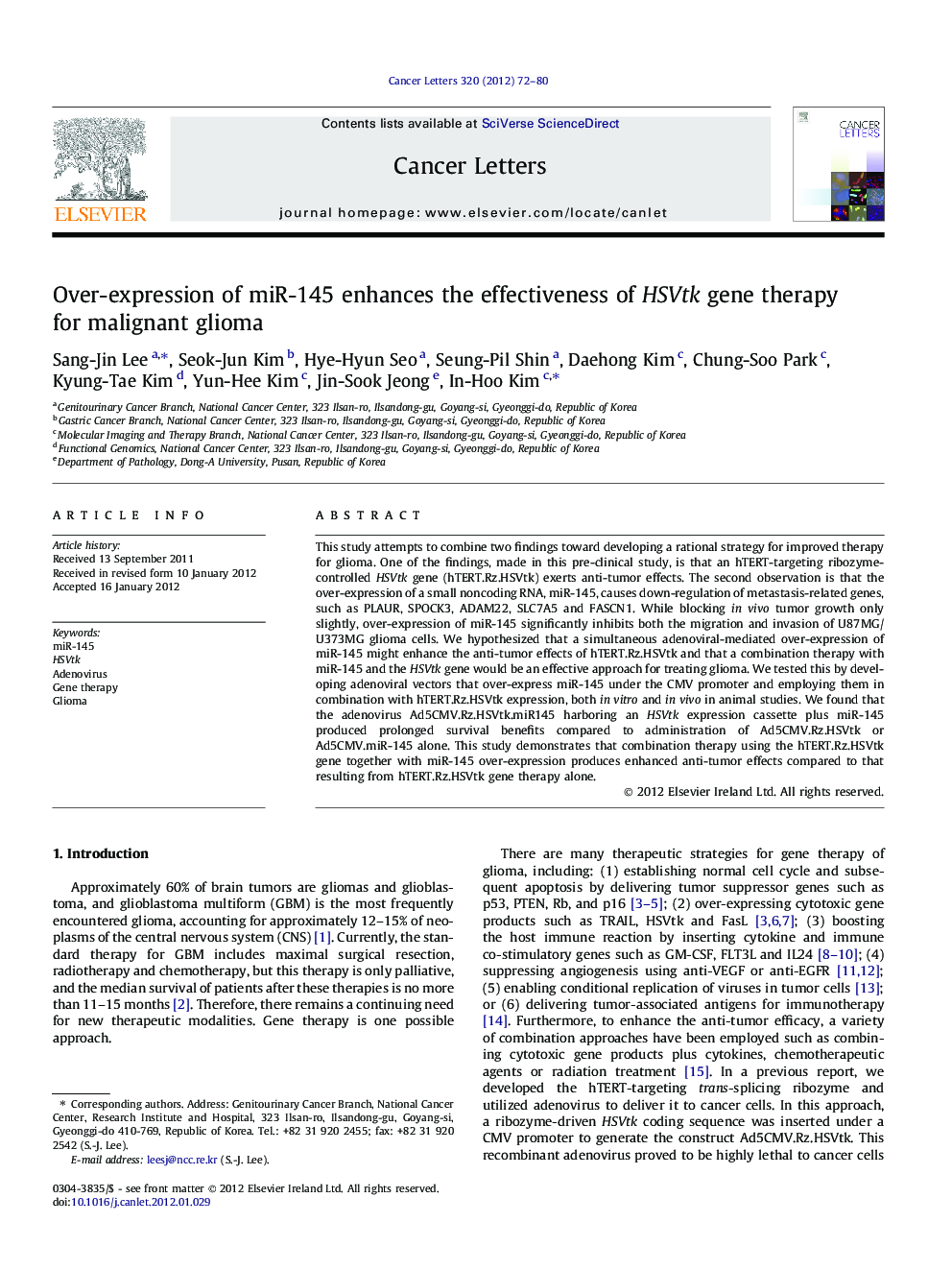| Article ID | Journal | Published Year | Pages | File Type |
|---|---|---|---|---|
| 2113350 | Cancer Letters | 2012 | 9 Pages |
This study attempts to combine two findings toward developing a rational strategy for improved therapy for glioma. One of the findings, made in this pre-clinical study, is that an hTERT-targeting ribozyme-controlled HSVtk gene (hTERT.Rz.HSVtk) exerts anti-tumor effects. The second observation is that the over-expression of a small noncoding RNA, miR-145, causes down-regulation of metastasis-related genes, such as PLAUR, SPOCK3, ADAM22, SLC7A5 and FASCN1. While blocking in vivo tumor growth only slightly, over-expression of miR-145 significantly inhibits both the migration and invasion of U87MG/U373MG glioma cells. We hypothesized that a simultaneous adenoviral-mediated over-expression of miR-145 might enhance the anti-tumor effects of hTERT.Rz.HSVtk and that a combination therapy with miR-145 and the HSVtk gene would be an effective approach for treating glioma. We tested this by developing adenoviral vectors that over-express miR-145 under the CMV promoter and employing them in combination with hTERT.Rz.HSVtk expression, both in vitro and in vivo in animal studies. We found that the adenovirus Ad5CMV.Rz.HSVtk.miR145 harboring an HSVtk expression cassette plus miR-145 produced prolonged survival benefits compared to administration of Ad5CMV.Rz.HSVtk or Ad5CMV.miR-145 alone. This study demonstrates that combination therapy using the hTERT.Rz.HSVtk gene together with miR-145 over-expression produces enhanced anti-tumor effects compared to that resulting from hTERT.Rz.HSVtk gene therapy alone.
